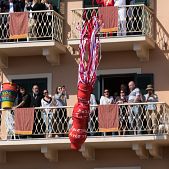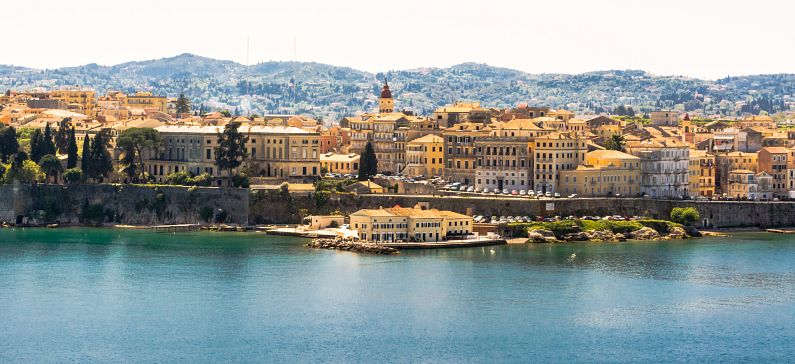
The jewel of Ionian Sea
Gold, sandy beaches, crystal clear waters on breathtaking beaches, green hills and vegetation that amaze the eye, scenic alleys, Venetian architecture and cultural attractions, local flavors, a historic city-jewel and dozens of traditional villages. The cosmopolitan Corfu, the most famous island of the Ionian Sea and one of the most popular in the Mediterranean, with its enormous cultural heritage and beautiful natural beauty, is an endless source of inspiration.
It is the attraction of hundreds of thousands of Greeks and foreign visitors each year, with families choosing it for the hospitality and warmth of the locals, couples for its romantic, fairy-tale capital and the “explorers”, for the magical landscapes and the variety of activities it offers.
Its name (Kerkyra in Greek), according to mythology, came from the daughter of the goddess of Asopos River, Korkyra, who God Poseidon kidnapped and brought to the island, where the fruit of their union, Fiakas, was born and where the Phoenicians lived later – that is why it is called the island of Phaeacians or Phaeakia.
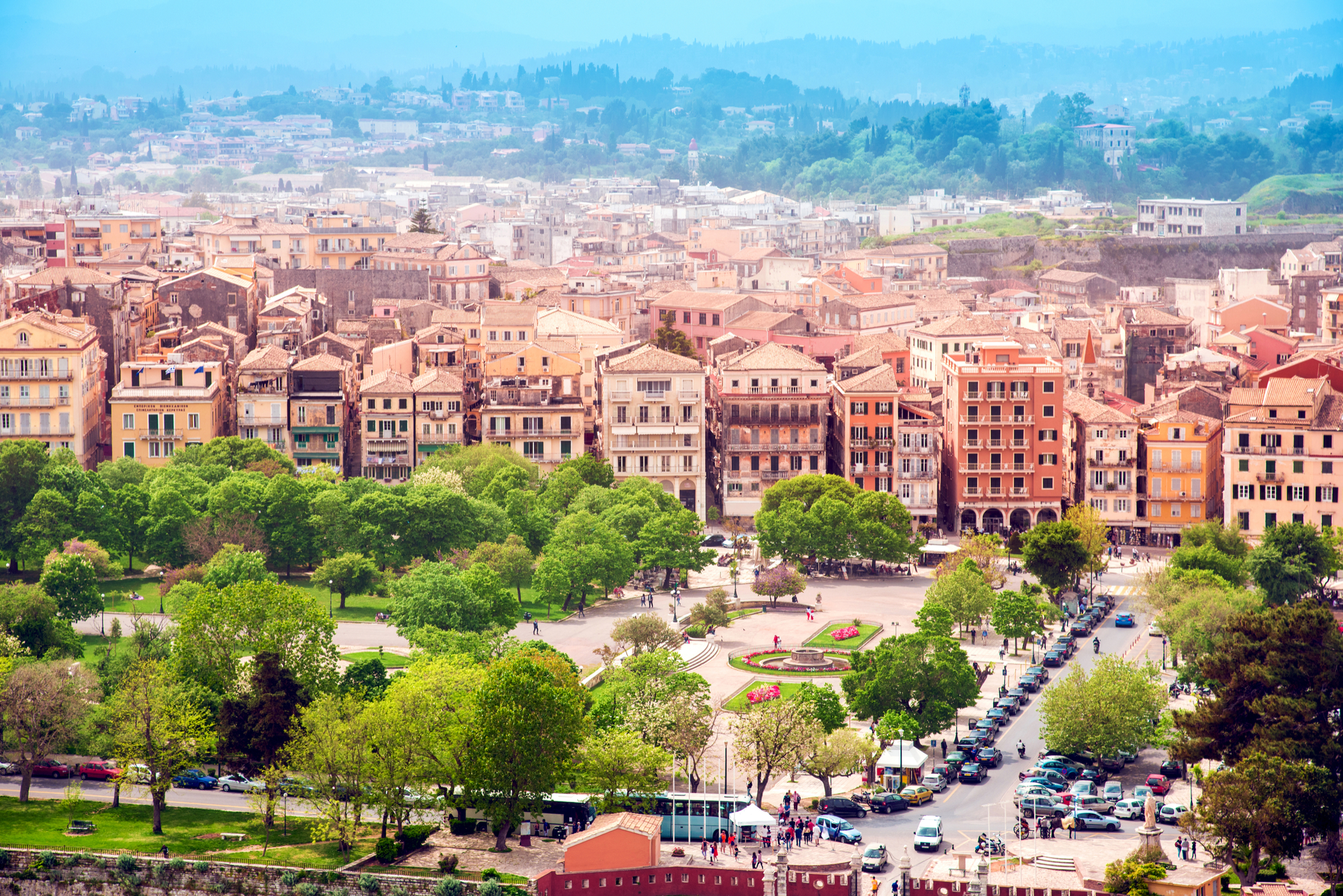
Corfu differs greatly from the rest of Greece as far as culture is concerned as it did not experience the Turkish occupation since it was part of the powerful naval state of Venice, which profoundly shaped and influenced the cultural character of both the island and its inhabitants. On one hand, the authoritarian attitude of the noble feudal order of the nobles constantly triggered popular reactions and movements and, on the other hand, the parallel development of the arts and culture completely altered the landscape in relation to the rest of the Turkish-occupied Greece.
The Venetian domination followed periods of dependence on the French – first democrats and then Napoleon imperialists – Russian and finally English, until 1864 when, collectively with all the Ionian Islands, Corfu was finally united with Greece. Its impressive past is emblazoned on the main sights of the city that the visitor sees all around them. Buildings and monuments from the Middle Ages and later of unique beauty have composed and still compose a miniature of Venice.
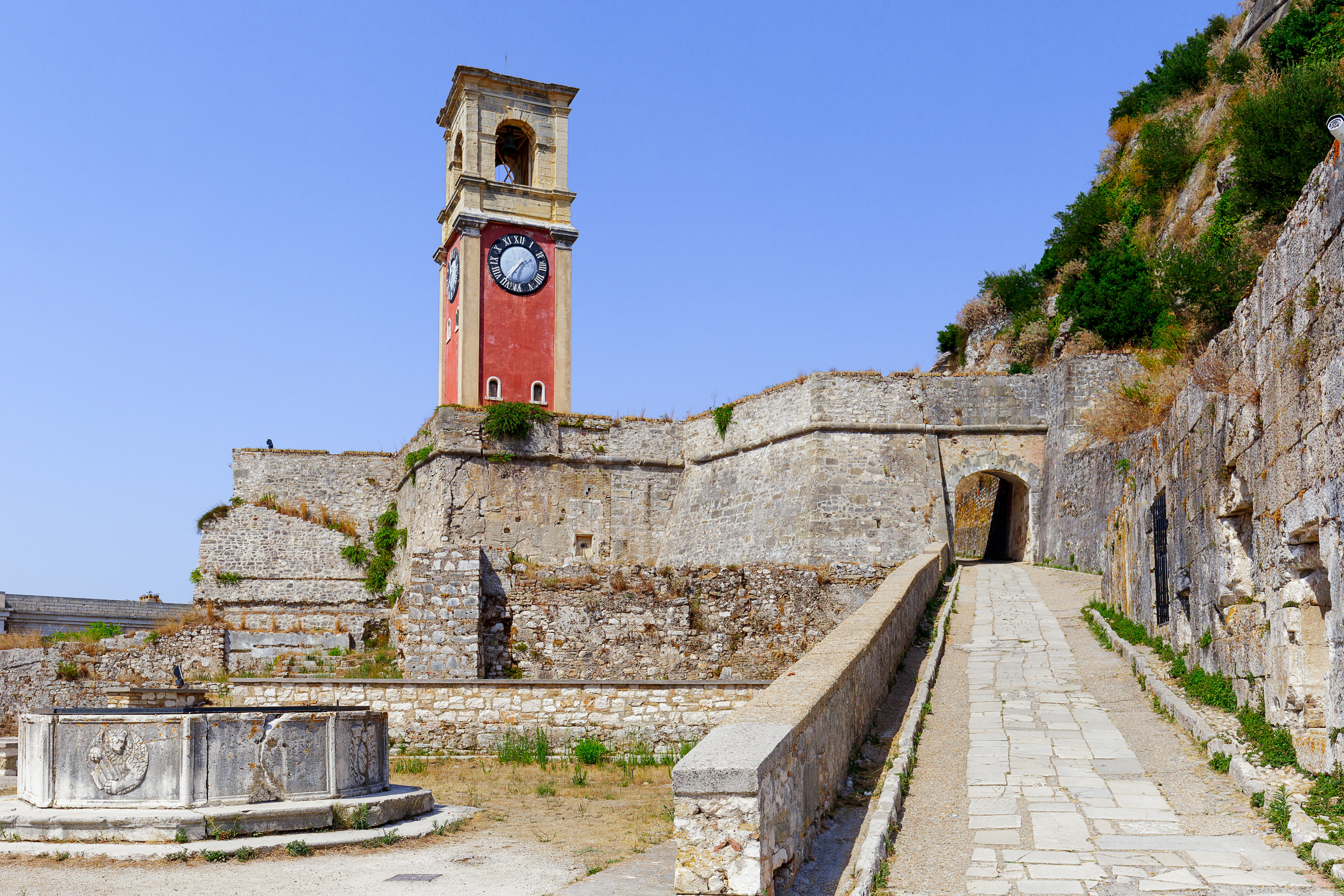
The Old Town with its old and new fortresses is a city-museum, a place of great artistic tradition and a host of European influences, the most successful example of a combination of Greek and Western architecture. In Spianada Square with Liston Square – a complex of buildings of French architecture with typical arches and perhaps the largest square of Europe, a place where the nobles gathered in the past – most of the city’s events take place, such as music concerts, processions, parades and cricket matches on the lawn of the square. The well-preserved historical center of the Old City has been declared a UNESCO World Heritage Site.
Τhe mountain of Pantokrator dominates the North, while the landscape complements the inland villages, both the living and the abandoned and picturesque fishing villages that have evolved into tourist resorts, as well as lagoons that are important ecosystems.
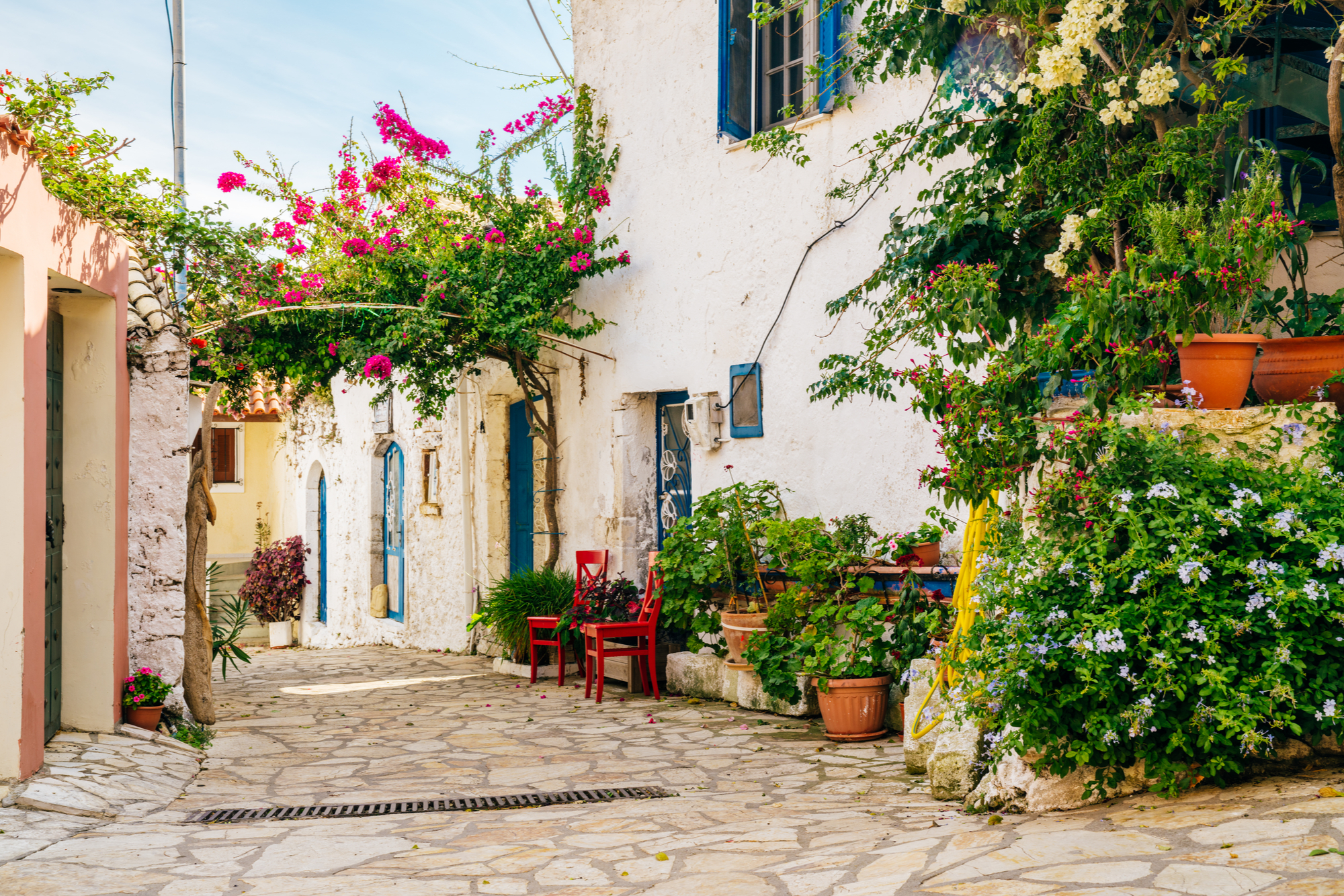
Corfu has a wealth of museums, monuments and cultural centers, such as the Byzantine Museum (at the Panagia Antibouniotissa Church), the unique Museum of Banknotes in Greece (in the Ionian Bank Building), the Dionysios Solomos Museum and the Archaeological Museum with its impressive pediment of Gorgons from the Doric temple of Artemis Gorgon, one of the oldest holly Doric temples of the Greek world, in Paleopoli (ancient city of Corfu, 6th century BC) with its large, well-preserved altar of porous limestone.
Worth seeing are the palaces of Saints Michael and George, which are also called old palaces and house a multitude of museums and exhibitions such as the Asian Art Museum with the 10,000 exhibits from the Far East countries and the collection with the sculptures of the Greek-Buddhist art of Gandara.
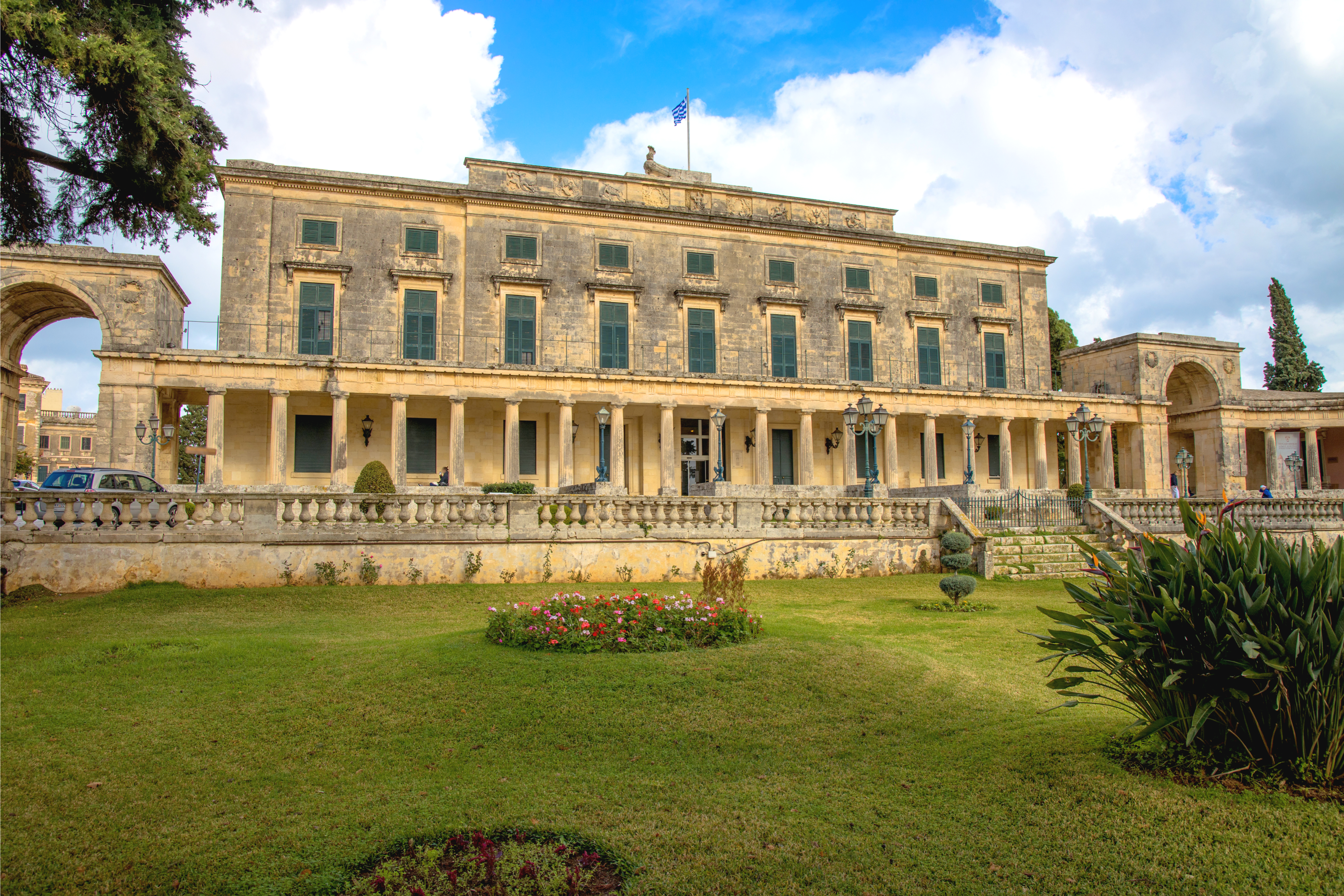
Commonly with the ruins of Paleopolis, the ancient city of Corfu, on the Peninsula of Kanoni, along with the building of the Ionian Academy, the first university founded in Greece in 1824, the building of the Ionian Parliament, the City Hall building, whose constructing started in 1663 initially as the Loggia dei Nobili and later housed in the famous San Giacomo Theater, are some of the countless cultural monuments of the island.
Outside the city, one can also visit dozens of sights and mansions, remnants of the Middle Ages that are found in almost every village. Some of them are Angelokastro (a Byzantine fort near Paleokastritsa), the Sea Museum at Benitses, the Olive Museum at the Cynopiastes, the Kaiser Bridge, which was built by William Kaiser when he bought Achillio.
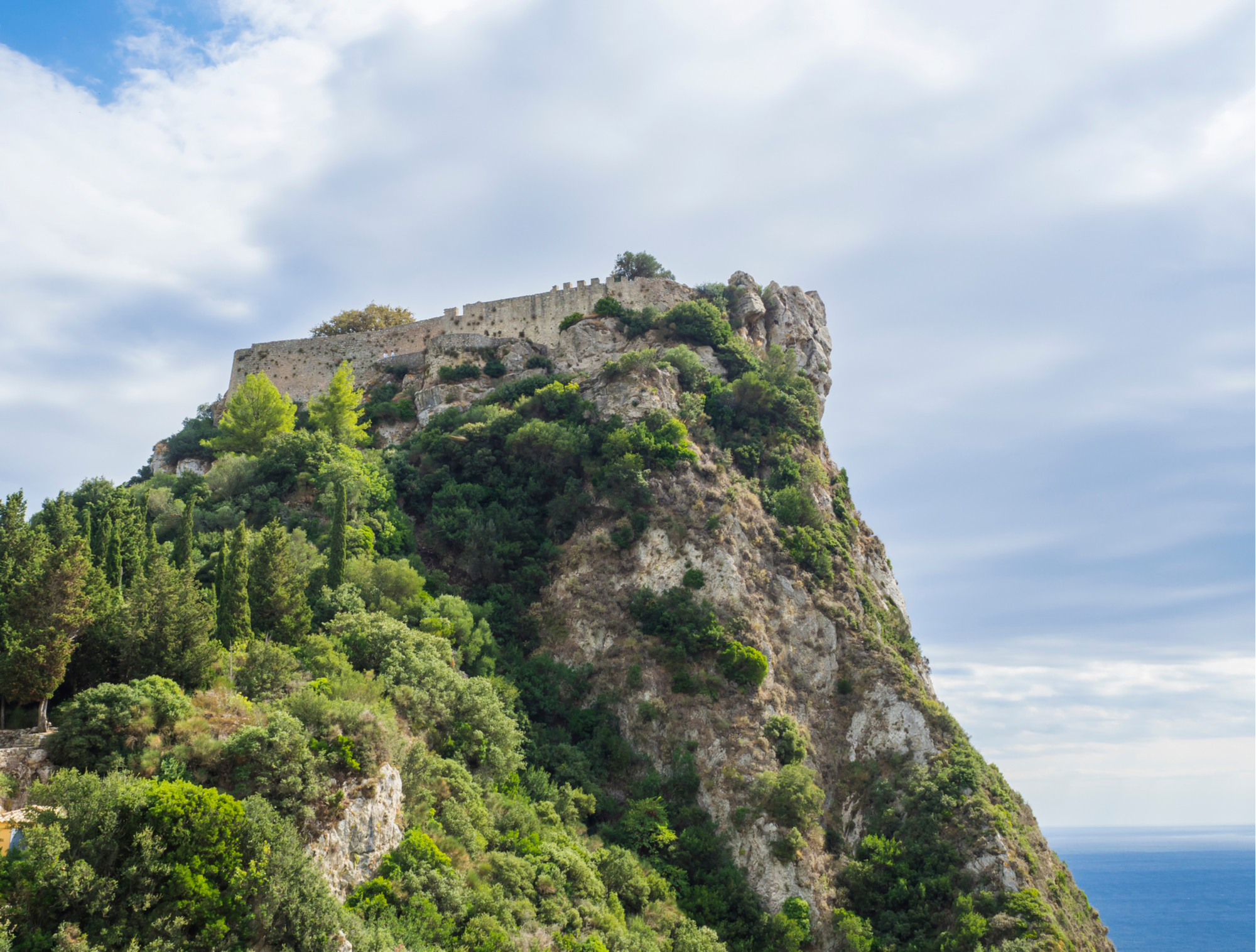
Achillio is the famous palace built by Empress Elizabeth (or Sissy) in honor of the mythical Achilles in the village of Gastour and today is a museum. The peristyles and the gardens of the palace with the excellent view are jeweled by marvelous statues (such as the Immortal Achilles, Satyr with Dionysus on his shoulders etc.), while on the inside the visitor can admire fine murals and paintings inspired by Greek mythology.
Among them is the Mon Repos, the summer residence of the English officer, a masterpiece of 19th-century neoclassical architecture, as well as the famous Canoni, from which one can take a boat to Pontikonisi, which, according to mythology, was a ship of the Phoenicians which became a stone.
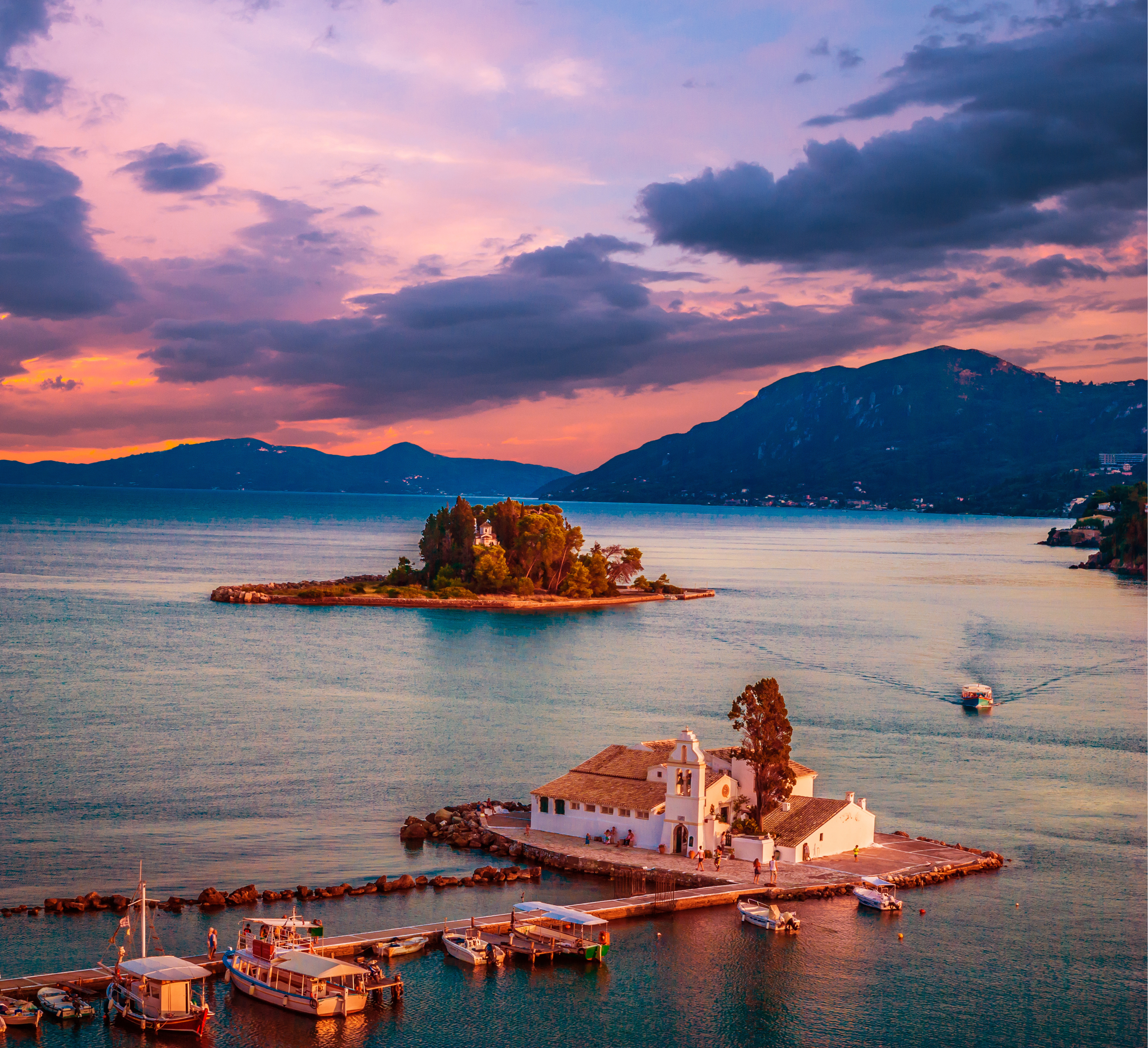
Corfu has many imposing churches, such as the church of Saint Spyridon, a religious reference point for the people of Corfu, the city’s tallest bell tower, a marble temple, frescoes, heirlooms and votive offerings. The relic of the saint is kept in a gold-plated shrine embellished with precious stones, and on the morning of the Palm Sunday, it makes a journey through the city.
Also worth mentioning is the Church of St. George, built in 1840, within the Old Fortress, in order to meet the religious needs of English soldiers serving in Corfu during the period of English Protection. In 1865, with the Corfu’s union with Greece, the church of Agios Georgios from the Anglican Church was converted into Orthodox, the inauguration of which took place on March 21, 1865, and the then metropolitan of Corfu, Athanasios Politis, dedicated it to St. George, the patron of the Infantry Body.
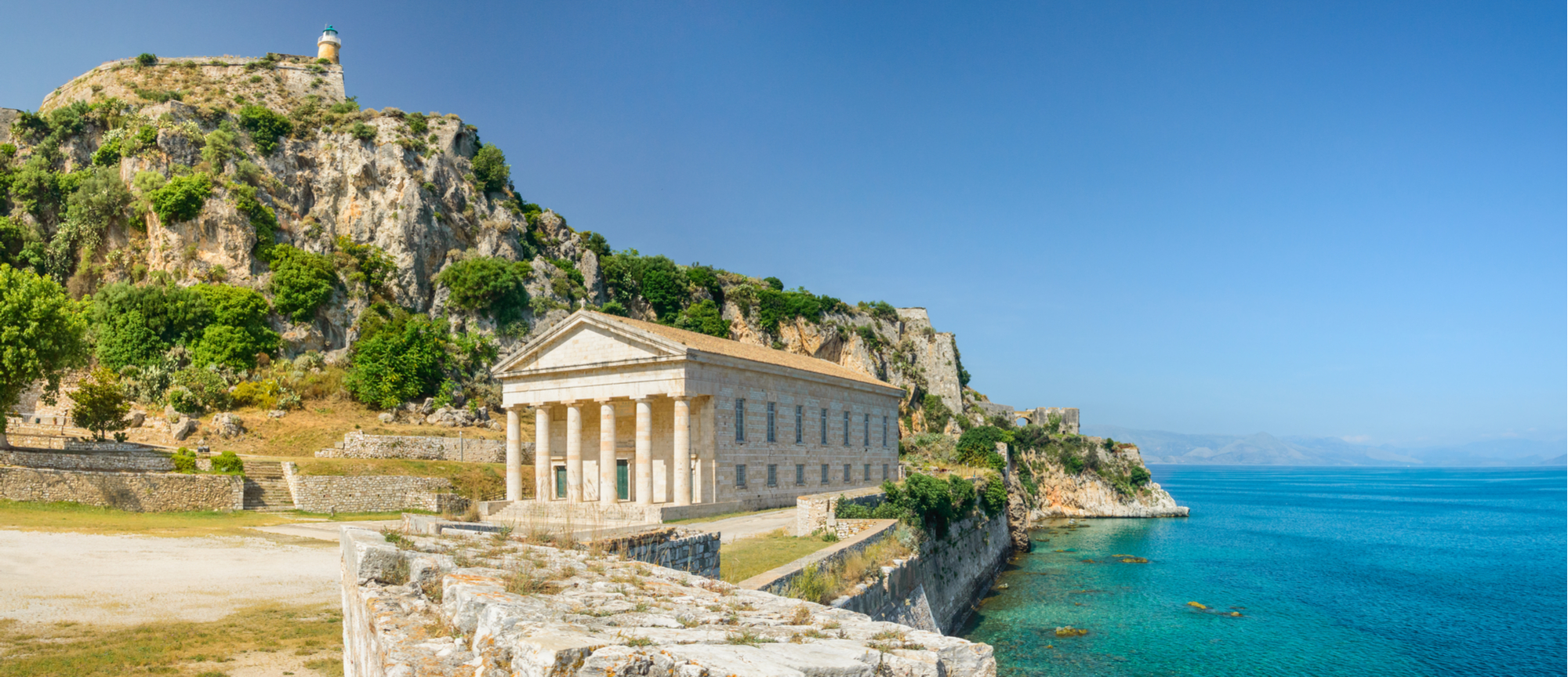
The enormous musical tradition of the island is broadly known, since in almost every village there is also a philharmonic orchestra, so the pilgrimage of the saint is accompanied by the 20 Philharmonic Orchestras of Corfu.
Events throughout the year enrich one’s stay in Corfu whether it’s a holiday or a short escape, as international music festivals, religious festivals, gastronomy celebrations and carnival events with influences from the Italian Commedia dell’Arte keep alive the beat of culture at all times.
The most famous Easter of Greece happens in Corfu, where throughout the Easter week the customs and traditions are kept all over the island, reaching the climax of the Holy Saturday. On the night of the Resurrection, everyone is gathered in Liston Square, and at the 11, the bells ring joyfully and huge clay pots with red ribbons and filled with water are ejected forcefully from the ornate balconies causing deafening bangs and sending waves of enthusiasm to the crowd. When the bustle of the clay pots ends, the Philharmonics swell in the streets, playing the Alegros Marsh.

At the same time, Pinya – the old commercial center of the city – revives the traditional Corfiot custom of “Mastela”. According to this custom, a half-barrel filled with water (mastela) decorated with myrtle trees and ribbons is placed in the middle of the street, inviting passers-by to throw coins for “good luck”. When the bells of the First Resurrection signal, a bold passer-by must dive into the barrel and pull out as many coins as they can.
The Resurrection takes place in the Upper Plateau, with all the windows of the large six-storey houses around the square open, lighted candles on the balconies, while with thousands of Easter candles, fireworks and drums the Resurrection is celebrated on the square. With the end of the Resurrection, the bands walk around in the city, playing merry mournings, and the crowd is singing, as the feast lasts until the morning with “chilichourda” (local dish), red eggs, dressings, gobelins and plenty of wine.
Περιβαλλοντολογικά η Κέρκυρα αποτελεί μία ολόκληρη ήπειρο σε μικρογραφία, μιας και διαθέτει κάθε είδους τοπία με απίστευτες εναλλαγές, από καταπράσινα δάση και βουνά μέχρι ερημωμένες αμμώδεις ακτές που θυμίζουν Σαχάρα. Ταυτόχρονα, όλα αυτά περιλαμβάνουν μοναδικά οικοσυστήματα με πολύ πλούσια βιοποικιλότητα, καθώς φιλοξενούν εκατοντάδες είδη πτηνών, άγριων ζώων, εντόμων, αλλά και όλα τα είδη φυτών και δέντρων που υπάρχουν στη Μεσόγειο και όχι μόνο.
Ευλογημένη από τη φύση, με τις πλαγιές της να πλημμυρίζουν από πεύκα, κυπαρίσσια και ευκάλυπτους, που κυλάνε προς τα καταγάλανα νερά, η Κέρκυρα είναι το όνειρο κάθε φυσιολάτρη. Η ανατολική ακτή είναι ισότιμης ομορφιάς με το ψιλό χαλίκι της παραλίας Μπαρμπάτη, τον μαγευτικό κόλπο της Κουλούρας και την κοσμική Δασιά. Νότια του νησιού κυριαρχεί η παραλία του Αρκουδίλα και ο χρυσαφένιος παράδεισος της περιπέτειας, ο Χαλικούνας, ενώ στις Αλυκές Ποταμού και στη Λίμνη Κορρισίων, φλαμίνγκο και άλλα μεταναστευτικά πουλιά κάνουν το δικό τους πέρασμα δημιουργώντας ένα εξωτικό τοπίο.
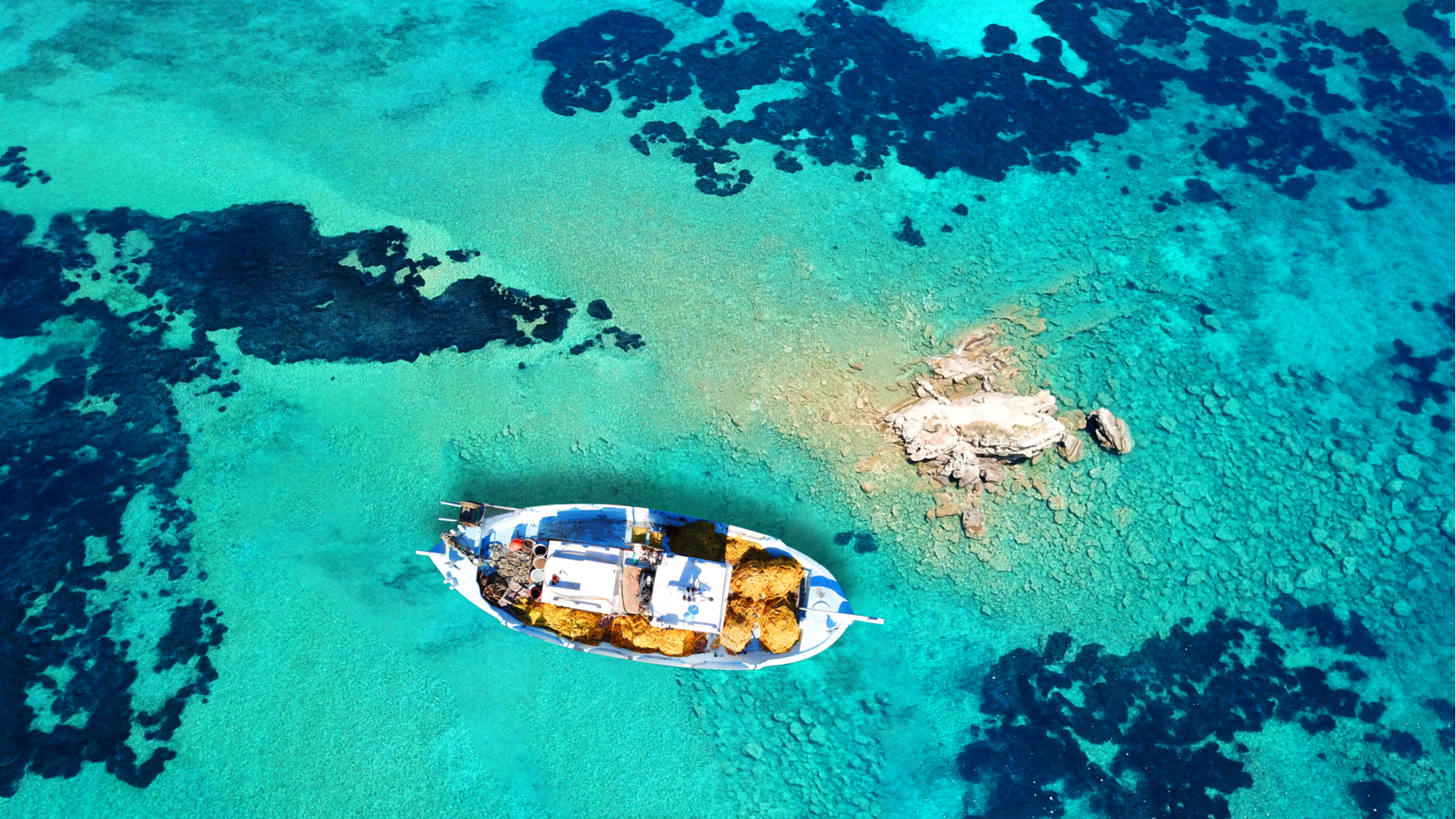
Στη δυτική ακτή, ανακαλύπτει κανείς μοναδικές παραλίες, όπως την ξακουστή αμμώδη παραλία του Αγίου Γεωργίου Πάγων, τους δραματικούς Έρμονες, την εντυπωσιακή Παλαιοκαστρίτσα, τη Γλυφάδα και τη Μυρτιώτισσα. Ένας από τους καλύτερους τρόπους για να εξερευνηθούν οι δυτικές και ανατολικές ακτές της Κέρκυρας είναι με ταχύπλοο ώστε ο ταξιδιώτης να απολαύσει τη θαλάσσια εξερεύνησή του, ανακαλύπτοντας μικρούς γαλήνιους όρμους ιδανικούς για μία δροσερή βουτιά.
Κάτι ακόμα που ο επισκέπτης δεν πρέπει να χάσει είναι η ευκαιρία μιας ημερήσιας εκδρομής με ιστιοφόρο για να κολυμπήσει στα κρυστάλλινα νερά απομονωμένων κόλπων και να ανακαλύψετε το μαγευτικό δίδυμο Παξούς, Αντίπαξους.
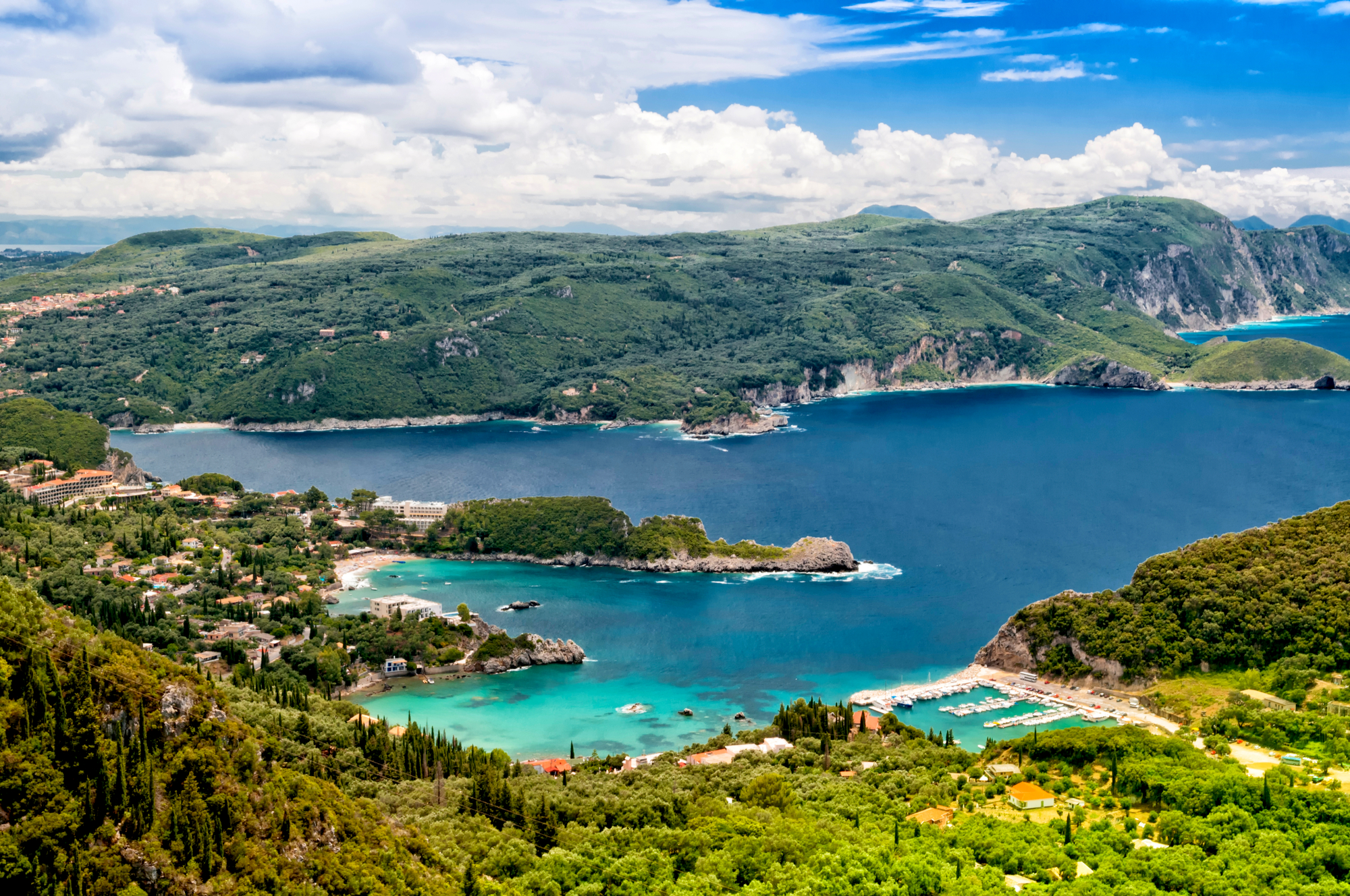
Οι λάτρεις της δράσης μπορούν να απολαύσουν το θαλάσσιο σκι στον κόλπο Γουβιά ή το Paragliding στη Δασσιά. Οι λάτρεις της κατάδυσης έχουν τον δικό τους υδάτινο παράδεισο στην Παλαιοκαστρίτσα, καθώς το καταδυτικό κέντρο προσφέρει μία μοναδική εξερεύνηση της θαλάσσιας ζωής του τόπου και το κέντρο στην παραλία Νησάκι προσφέρει μαθήματα PADI, για αρχάριους δύτες. Όσοι αγαπούν την ιππασία μπορούν να επιλέξουν τη Γουβιά και το Αυλάκι μεταξύ άλλων για να κάνουν υπέροχες διαδρομές. Τέλος, η Κέρκυρα διαθέτει ένα εξαιρετικό δίκτυο διαδρομών πεζοπορίας, όπως το Κερκυραϊκό μονοπάτι, το μονοπάτι Ερημίτη και τη διαδρομή προς το βουνό Παντοκράτορα.











